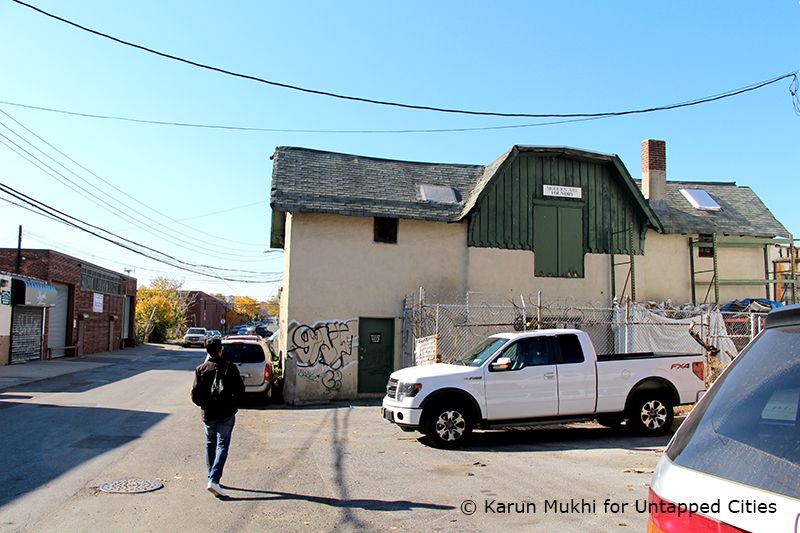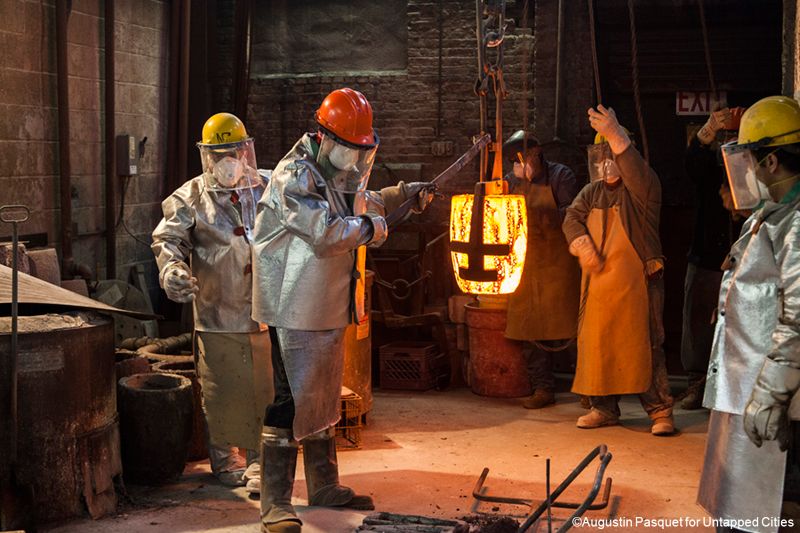NYC’s Forgotten ‘War on Christmas Trees’
Discover how an obscure holiday crackdown affects festive street vendors today!


Since 1863, 29 sculptures have been installed across Central Park’s 843-acres. Of that number, 22 are dedicated to men, two are inspired by fictional female characters and one is meant to be climbed on. Located on 76th Street and 5th Avenue by the north side of Central Park’s Conservatory Water, sculptor Jose de Creeft’s bronze depiction of Alice in Wonderland has served as stomping grounds for kids ever since it was constructed in 1959.
Today, it’s become a beloved fixture of the park, but the sculpture’s origins can be traced back to Astoria’s Modern Art Foundry, where it was cast. Located in the former carriage house of the famous Steinway Mansion, the Foundry is a mecca for sculptors where artistic visions become realized in metal. The roots of some of the city’s most recognized works can be found here, and we’re holding a behind-the-scenes tour of the space to shed light on the artist fabrication processes that go on inside.
Behind-the-Scenes Tour of Modern Art Foundry
Over the years, many projects have been brought to life at The Modern Art Foundry, but Alice in Wonderland holds distinction as “one of the most cherished sculptures” in Central Park. It was commissioned by philanthropist George Delacorte as a tribute to his late wife Margarita, whose favorite author was Lewis Carroll; she would read his whimsical book, “Alice’s Adventures in Wonderland

,” to her children.
Dedicated by Robert Moses on May 7, 1959, Alice in Wonderland was erected as a gift to the children of New York City. While its design was based off original illustrations from the first published edition of the book by John Tenniel, Alice is actually a depiction of Creeft’s daughter, Donna, and the Mad Hatter is a caricature of George Delacorte himself.
Interestingly (and atypical of most public works), it was also deliberately crafted with interactivity in mind. In a conversation recorded on February 2011, Bob Spring, whose father started the foundry in 1932, revealed that the composition was designed to allow the public to crawl over Alice and her cohort of friends (including the Mad Hatter, the White Rabbit, the Dormouse, and the Cheshire Cat). In fact, the mushrooms actually serve as supports, allowing access to the rest of the sculpture.

Steinway Mansion Carriagehouse – Now The Modern Art Foundry
According to Spring, his job was to rub his hands all over the surface of the sculpture to check if there were any sharp surfaces that could potentially harm someone. “I actually touched every inch of the statue to make sure it was safe,” he said. In the same conversation, he also sheds light on the fabrication process in general:
I do remember finishing the big mushroom. It was cast in sections, and some of the welding was done on the inside. There was not enough room inside of the bronze for me use the mask with the dark glasses to protect my eyes from being burned, so I held the glass without the hood and I tack welded it. Little did I know, that the ultra-violet light was bouncing off the top of the bronze and into my eyes. I went home that night and in the middle of the night, it felt like I had sand in my eyes. It hurt so much the next day that I went to have them checked by my doctor. What happened was, my retinas were burned and I suffered for many years after that with night driving because it would give me headaches.

Following the casting process, the sculpture was moved to its permanent home in Manhattan. To do so, the entire piece had to be lifted by a crane on to a flat bed truck, and wheeled through the streets of Queens over to Central Park.
Decades later, it now serves as a favorite spot for locals and tourists alike, but it wasn’t initially well received by everyone. In response to criticism that the sculpture lacked a specific function and was not monumental, Delacorte stated that it “just seemed a nice thing to have in the park.”
“On Sunday mornings, I watch the kids climbing over it, under it. It’s a regular parade,” he said. “What good is the Eiffel Tower? Not everything has to have a practical function. What do we remember about Rome? We remember the fountains and the statues. There has to be a place in life for the eye’s pleasure.”
Behind-the-Scenes Tour of Modern Art Foundry
Next, read about Why Are There No Women Statues in Central Park and check out what goes on in the Modern Art Foundry.
Subscribe to our newsletter